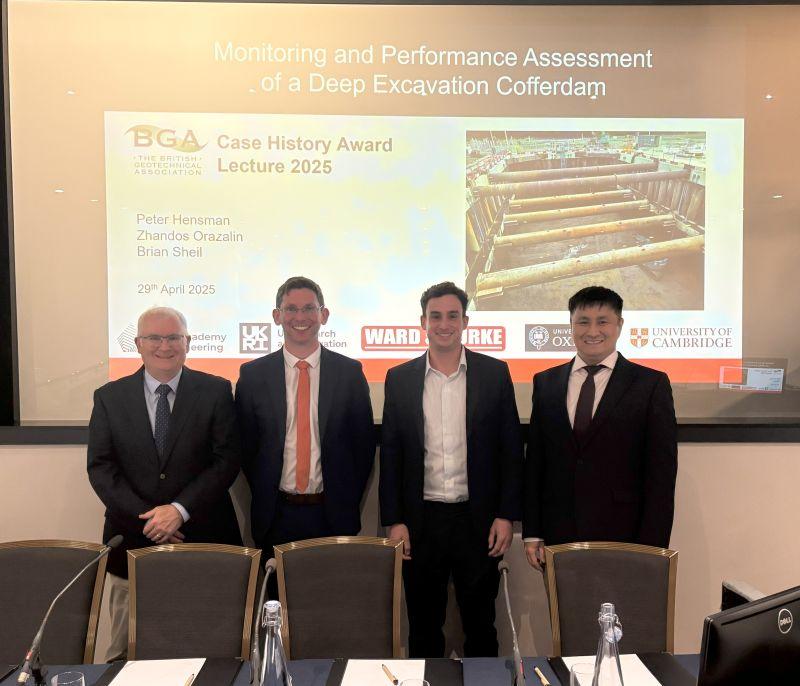
Published on 30 April 2025
Last night’s British Geotechnical Association (BGA) Lecture offered a compelling insight into geotechnical engineering in practice, highlighting the real-world impact of rigorous monitoring and data-driven design.
The lecture was delivered by Dr Brian Sheil (Cambridge Laing O’Rourke Centre), Peter Hensman (Ward & Burke Construction), and Zhandos Orazalin (Mott MacDonald), recipients of the 2024 BGA Case Histories Award. Their award-winning paper focused on the monitoring and performance assessment of a 12 m-deep energy-from-waste bunker excavation at the PROTOS facility in Chester, UK.
Constructed in soft clay and peat, the excavation was supported by a complex combi-wall cofferdam, internal bracing, and a reinforced concrete capping beam. The project stood out for its innovative use of real-time monitoring, which tracked wall deflections, bracing loads, and groundwater levels. This directly informed construction decisions and enhanced safety on site.
Dr Sheil emphasised the foundational importance of high-quality data collection in dynamic and constrained environments such as infrastructure and live construction sites. “While AI continues to dominate the headlines,” he noted, “we must not overlook the groundwork that enables it. A key challenge lies in extracting meaningful data at scale. Without this ‘grunt work,’ AI simply doesn’t work—it’s the cherry on top.”
The lecture exemplified how integrated monitoring and design can reduce risk, improve outcomes, and ultimately transform how infrastructure projects are delivered.
Congratulations to the authors for this outstanding contribution to the field of geotechnical engineering.
Read the open-access paper.
The text in this work is licensed under a Creative Commons Attribution 4.0 International License.
